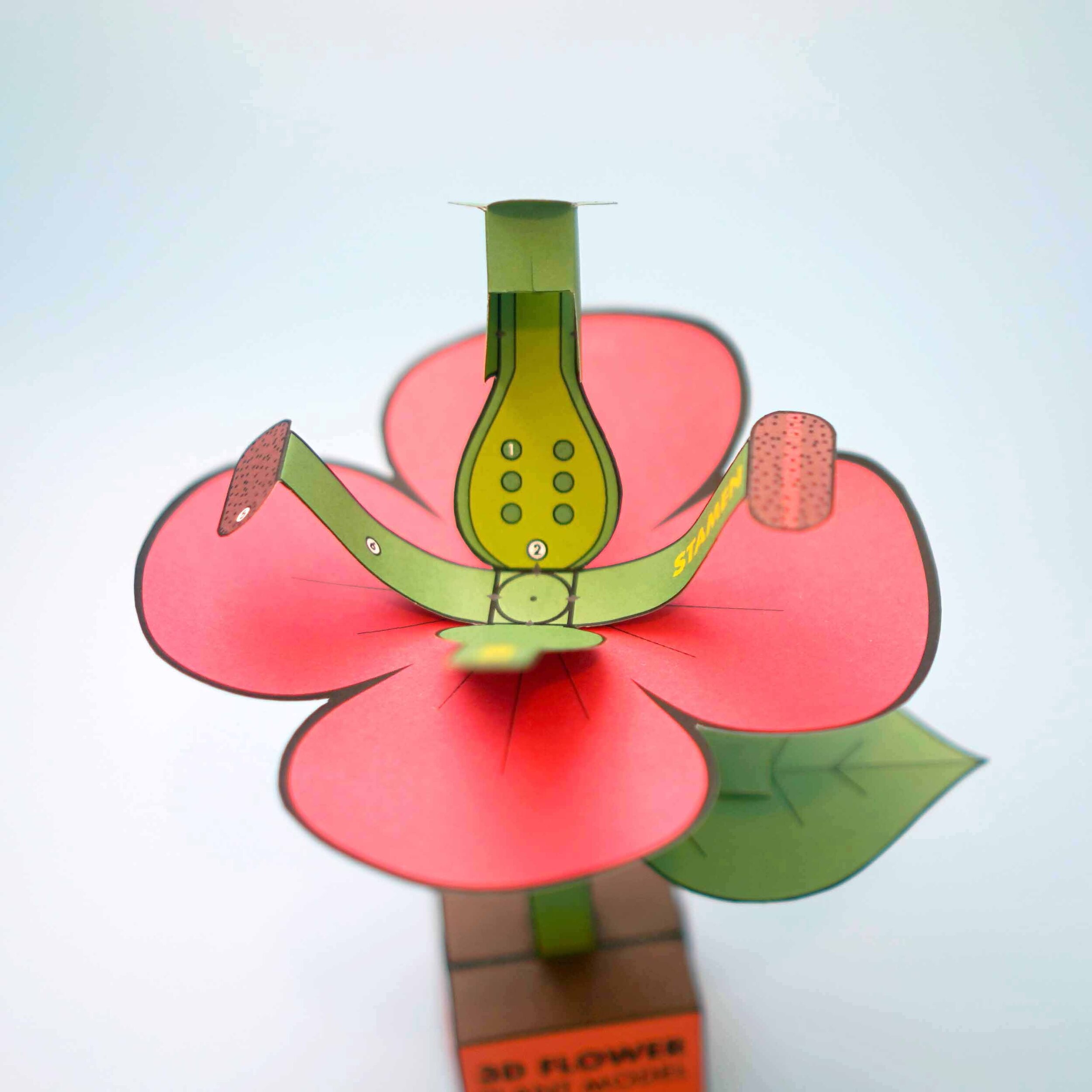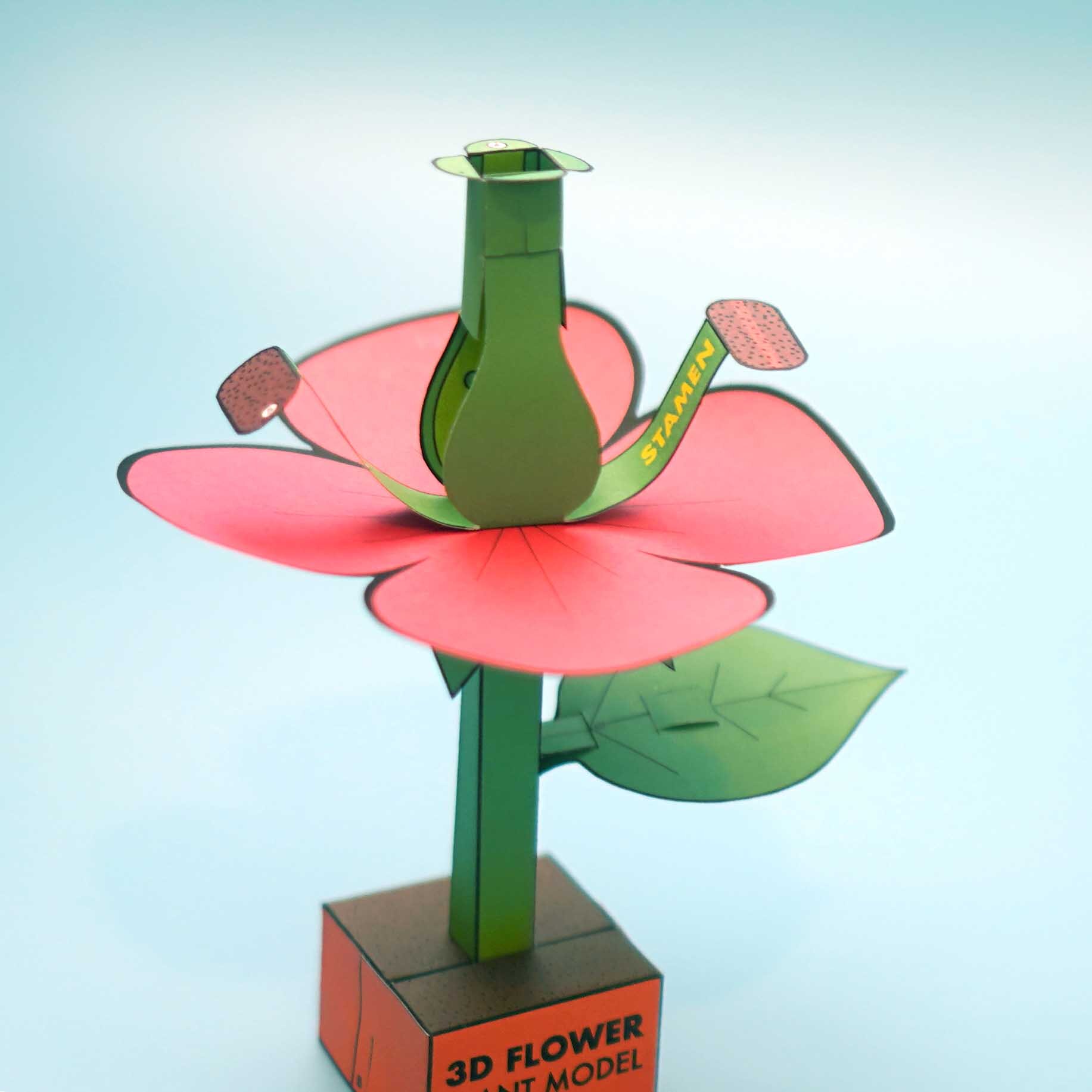Bundle: Pollination Activity + 3D Flower Model
Like Peanut Butter and Jelly, somethings are meant to go together. Purchase the Pollination Activity and 3D Flower Model Bundle together to maximize the learning experience.
The Pollination Activity is an engaging way to teach students about pollination. All students will be active participants through this hands on activity. Students will learn how specialized plant structures influence pollinator behavior. Every pollinator included comes with a character card that explains their attraction to different plant features (petal color, scent, etc.). These descriptions will guide students in this interactive activity. Worksheets are included to help students determine how pollination is influenced by specialized physical features of plants. The Pollination Activity meets the MS-LS1-4 Standard.
Featured Pollinators:
Big Blind Bat
Hungry Hummingbird
Blue Butterfly
Gray Moth
Busy Bee
Purple Striped Bee
The 3D Flower Model is a great visual aid designed to pair with the Pollination Activity. It’s easy to construct (video available), visually appealing, recyclable, and not to mention fun to make. Students of all ages (K-12) will enjoy putting this together. They will be actively engaged while learning about the parts of the flower and pollination.
Featured Parts:
Stigma
Style
Ovary
Ovule
Filament
Anther
Receptacle
Sepal
Stem
Roots
Pollen
Like Peanut Butter and Jelly, somethings are meant to go together. Purchase the Pollination Activity and 3D Flower Model Bundle together to maximize the learning experience.
The Pollination Activity is an engaging way to teach students about pollination. All students will be active participants through this hands on activity. Students will learn how specialized plant structures influence pollinator behavior. Every pollinator included comes with a character card that explains their attraction to different plant features (petal color, scent, etc.). These descriptions will guide students in this interactive activity. Worksheets are included to help students determine how pollination is influenced by specialized physical features of plants. The Pollination Activity meets the MS-LS1-4 Standard.
Featured Pollinators:
Big Blind Bat
Hungry Hummingbird
Blue Butterfly
Gray Moth
Busy Bee
Purple Striped Bee
The 3D Flower Model is a great visual aid designed to pair with the Pollination Activity. It’s easy to construct (video available), visually appealing, recyclable, and not to mention fun to make. Students of all ages (K-12) will enjoy putting this together. They will be actively engaged while learning about the parts of the flower and pollination.
Featured Parts:
Stigma
Style
Ovary
Ovule
Filament
Anther
Receptacle
Sepal
Stem
Roots
Pollen
Like Peanut Butter and Jelly, somethings are meant to go together. Purchase the Pollination Activity and 3D Flower Model Bundle together to maximize the learning experience.
The Pollination Activity is an engaging way to teach students about pollination. All students will be active participants through this hands on activity. Students will learn how specialized plant structures influence pollinator behavior. Every pollinator included comes with a character card that explains their attraction to different plant features (petal color, scent, etc.). These descriptions will guide students in this interactive activity. Worksheets are included to help students determine how pollination is influenced by specialized physical features of plants. The Pollination Activity meets the MS-LS1-4 Standard.
Featured Pollinators:
Big Blind Bat
Hungry Hummingbird
Blue Butterfly
Gray Moth
Busy Bee
Purple Striped Bee
The 3D Flower Model is a great visual aid designed to pair with the Pollination Activity. It’s easy to construct (video available), visually appealing, recyclable, and not to mention fun to make. Students of all ages (K-12) will enjoy putting this together. They will be actively engaged while learning about the parts of the flower and pollination.
Featured Parts:
Stigma
Style
Ovary
Ovule
Filament
Anther
Receptacle
Sepal
Stem
Roots
Pollen






